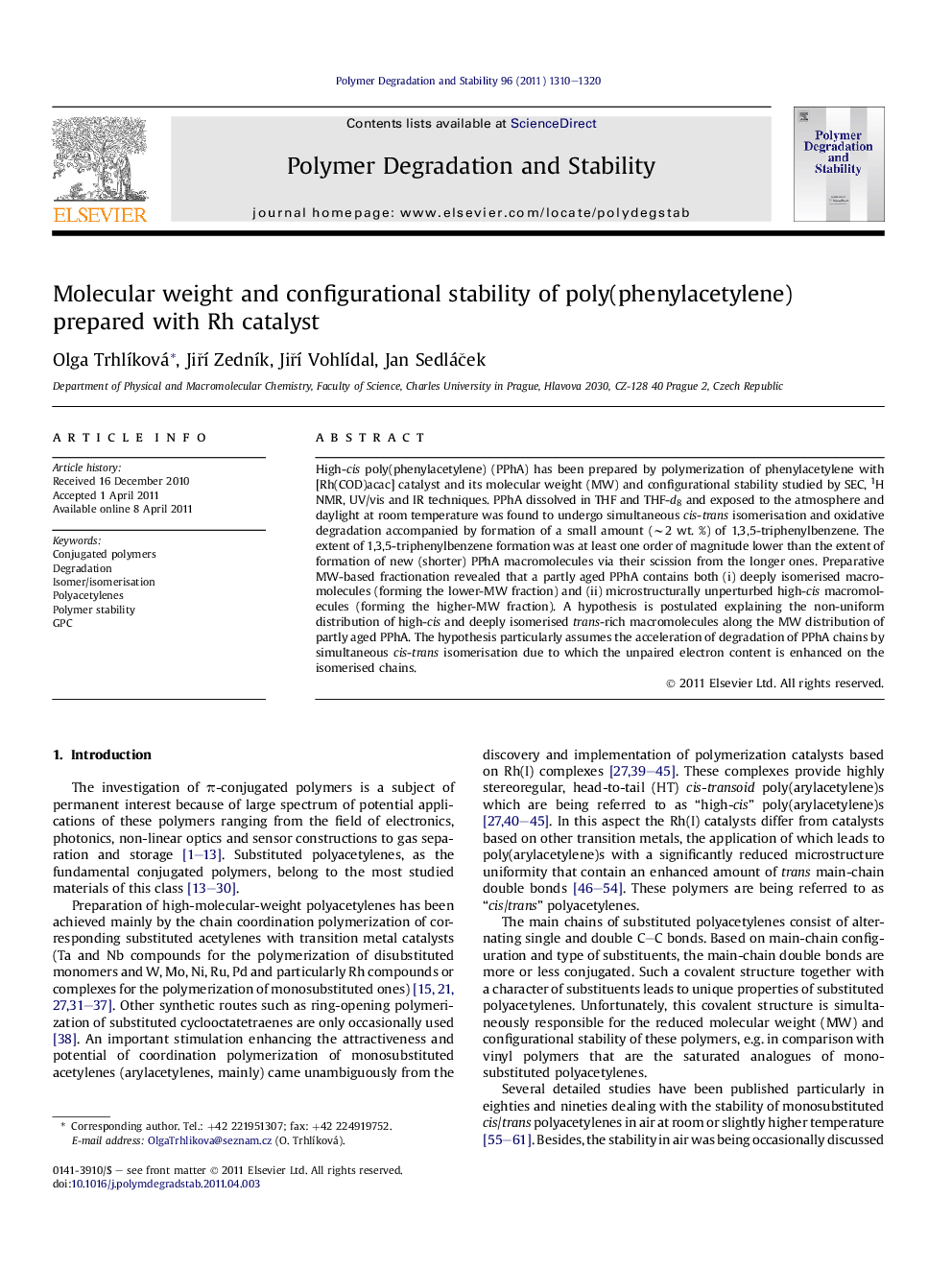| Article ID | Journal | Published Year | Pages | File Type |
|---|---|---|---|---|
| 5203590 | Polymer Degradation and Stability | 2011 | 11 Pages |
High-cis poly(phenylacetylene) (PPhA) has been prepared by polymerization of phenylacetylene with [Rh(COD)acac] catalyst and its molecular weight (MW) and configurational stability studied by SEC, 1H NMR, UV/vis and IR techniques. PPhA dissolved in THF and THF-d8 and exposed to the atmosphere and daylight at room temperature was found to undergo simultaneous cis-trans isomerisation and oxidative degradation accompanied by formation of a small amount (â¼2Â wt. %) of 1,3,5-triphenylbenzene. The extent of 1,3,5-triphenylbenzene formation was at least one order of magnitude lower than the extent of formation of new (shorter) PPhA macromolecules via their scission from the longer ones. Preparative MW-based fractionation revealed that a partly aged PPhA contains both (i) deeply isomerised macromolecules (forming the lower-MW fraction) and (ii) microstructurally unperturbed high-cis macromolecules (forming the higher-MW fraction). A hypothesis is postulated explaining the non-uniform distribution of high-cis and deeply isomerised trans-rich macromolecules along the MW distribution of partly aged PPhA. The hypothesis particularly assumes the acceleration of degradation of PPhA chains by simultaneous cis-trans isomerisation due to which the unpaired electron content is enhanced on the isomerised chains.
